Two particles A and V are projected in the vertical plane with same initial velocity u0 from part (0,0) and (l,-h) towards each other as shown in figure
The path of particle A with respect to particle B will be –
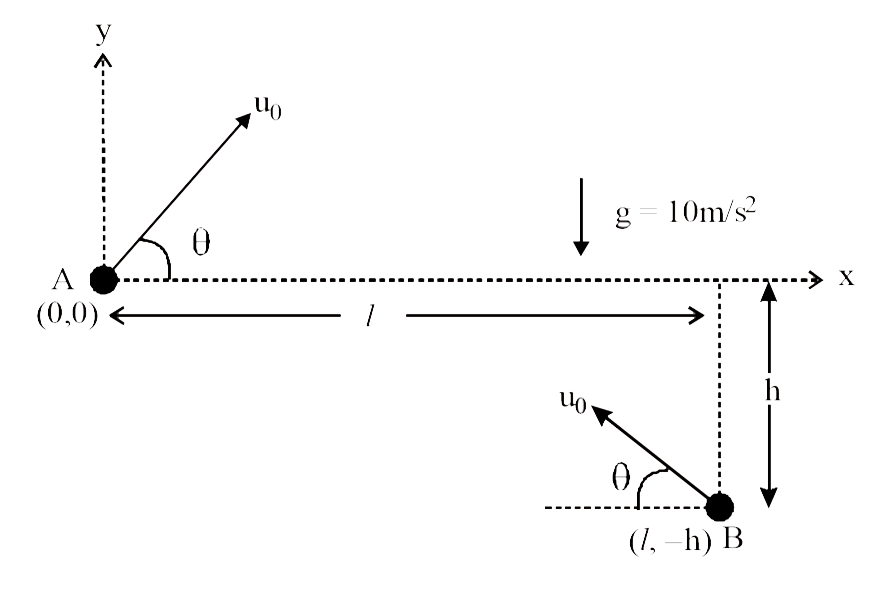
parabola
straight line parallel to x-axis
straight line parallel to y-axis
none of these
NA
Topper's Solved these Questions
Similar Questions
A force F is applied on a block of mass 5kg as shown in figure. Co-efficient of friction between the wall and clock is √32.(g=10m/s2)
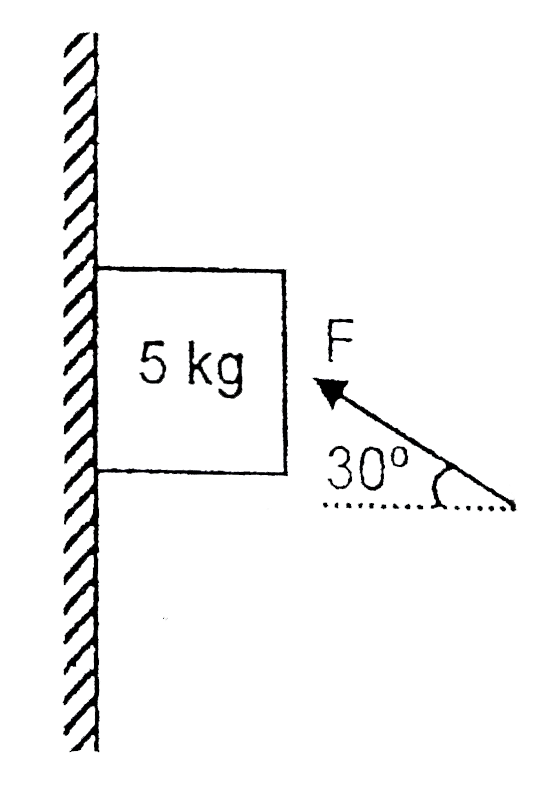
Select correct option(s)
View SolutionA string is stretched betweeb fixed points separated by 75.0cm. It observed to have resonant frequencies of 420Hz and 315Hz. There are no other resonant frequencies between these two. The lowest resonant frequency for this strings is
View SolutionTwo particles A and B are placed as shown in figure. The particle A, on the top of tower, is projected horizontally with a velocity u and particle B is projected along the surface towards the tower, simultaneously. If both particles meet each other, then the speed of projection of particles B is [ignore any friction]
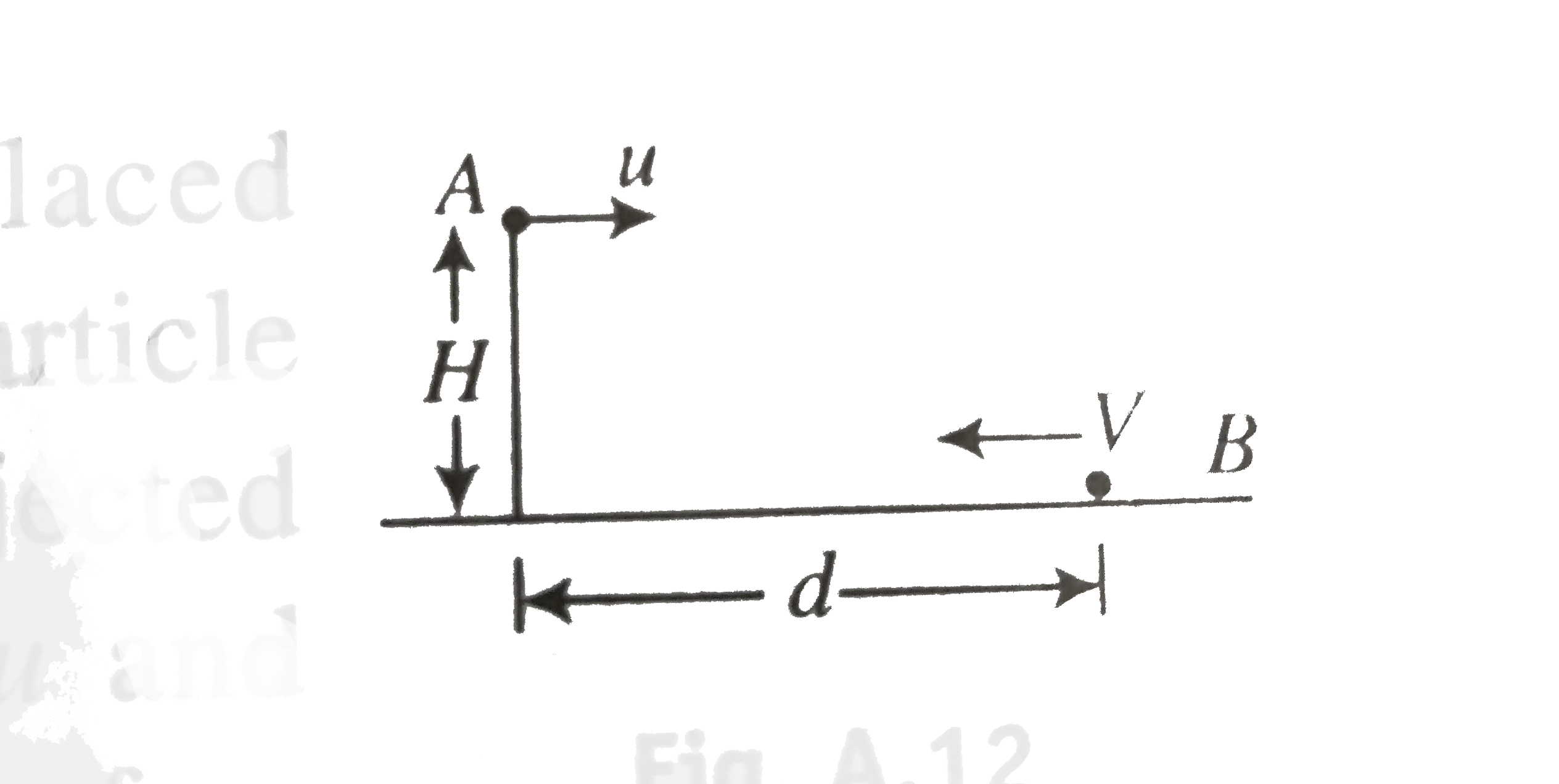
View SolutionFigure shows that particle A is projected from point P with velocity u along the plane and simultaneously another particle B with velocity v at an angle α with vertical. The particles collide at point Q on the plane. Then
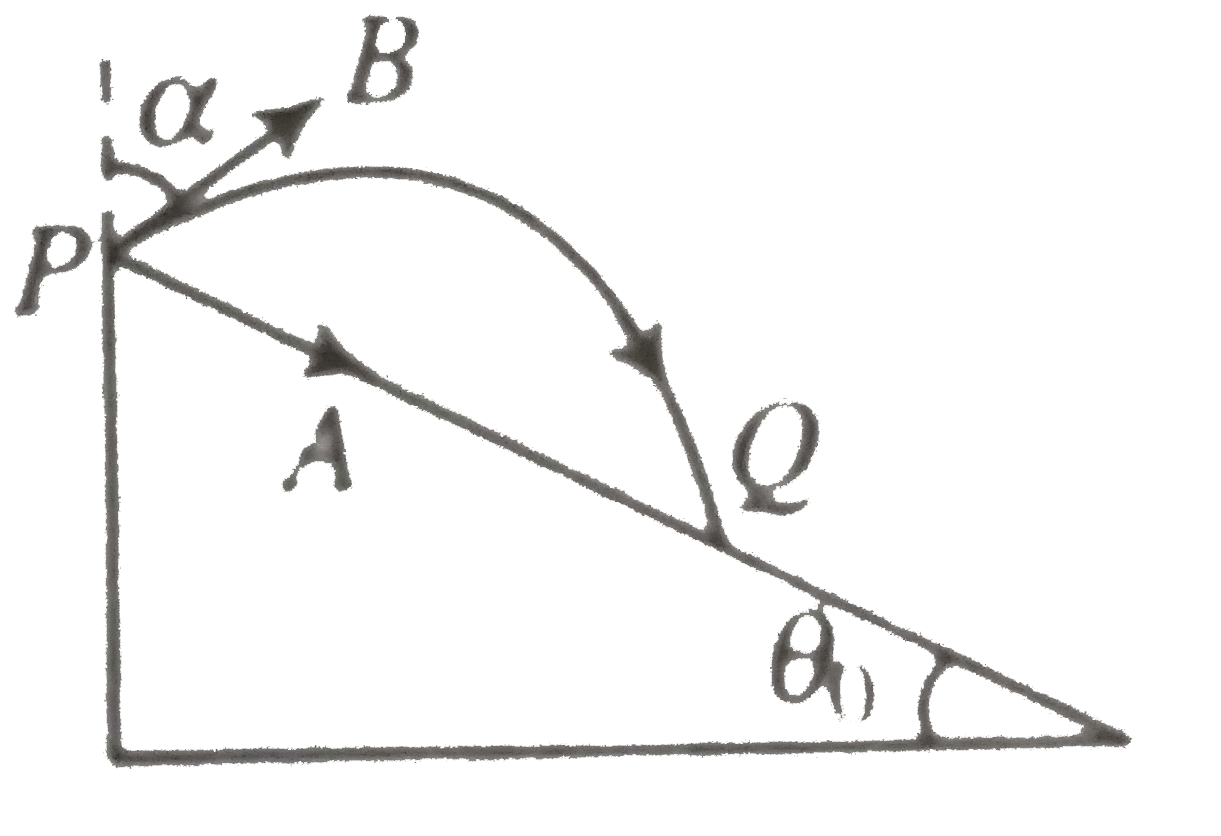
View SolutionTwo particles A and B are projected in same vertical plane as shown in figure.Their initial positions (t=0), initial spped and angle of projections are indicated in the diagram.If initial angle of projection θB=37∘, what should be initial speed of projection of particle B, so that it hits particle A.UA=60m/s
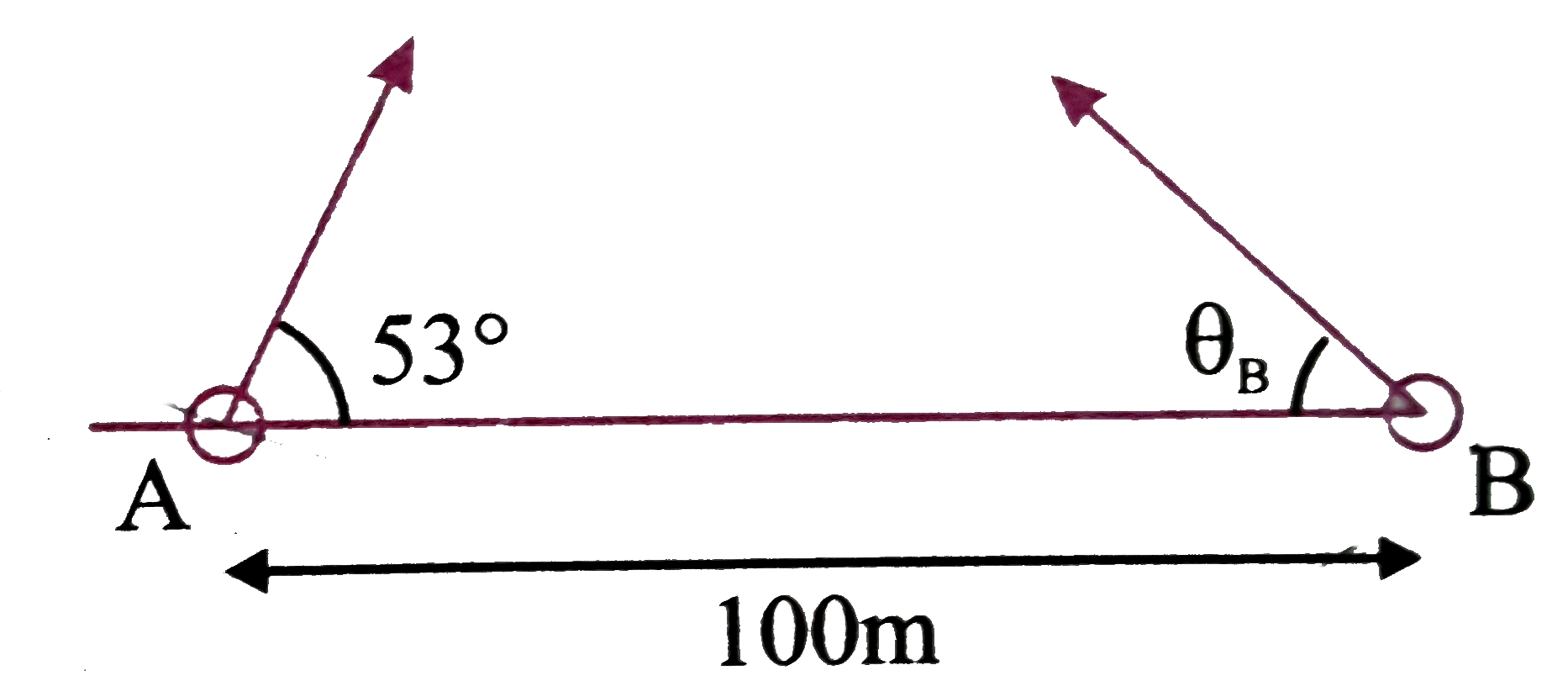
View SolutionInitial velocity and acceleration of a particles are as shown in the figure. Acceleration vector of particle remain constant. Then radius of curvature of path of particle :
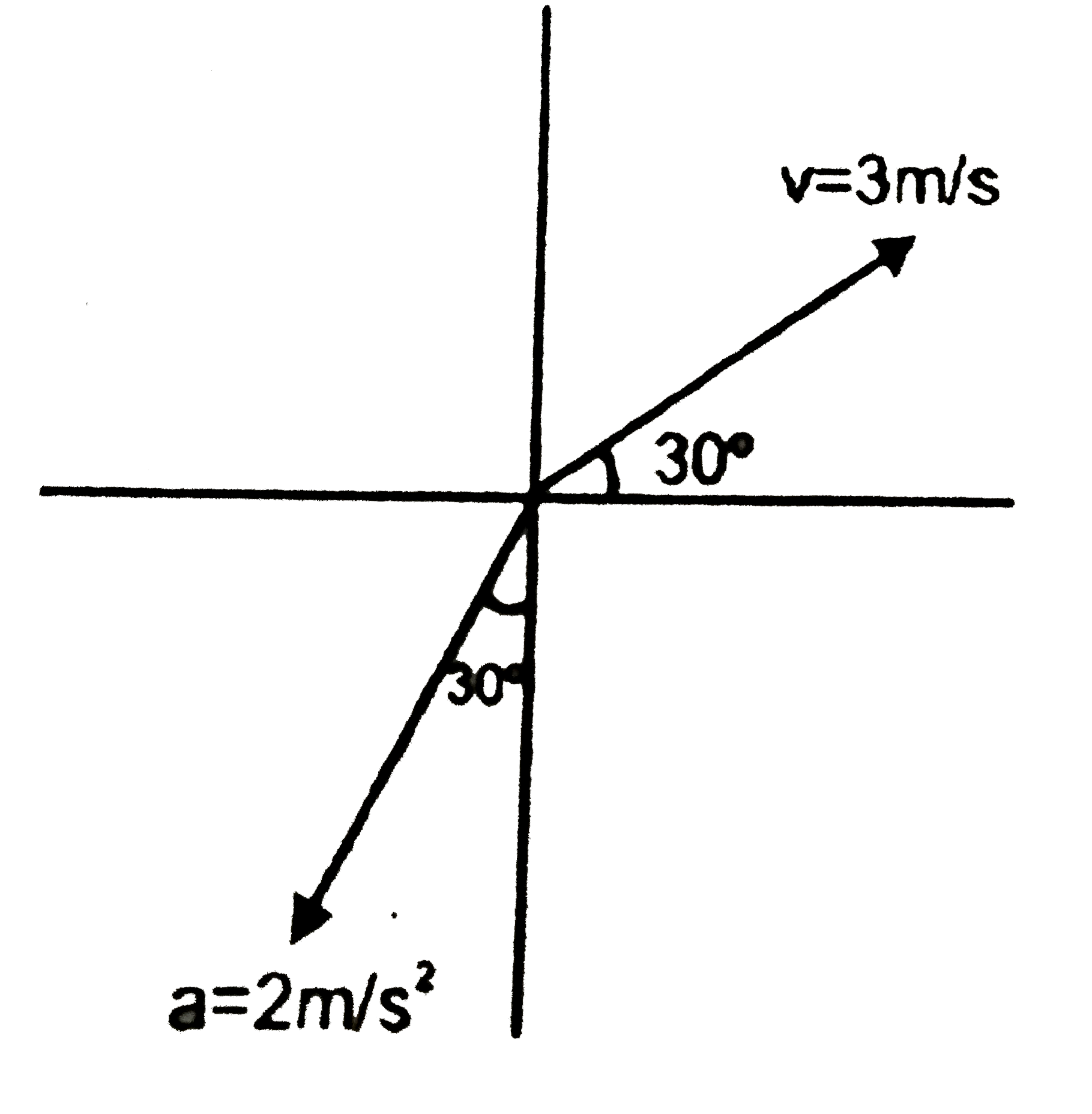
View SolutionThere of the fundamental constant of physics are the universal gravitational constant, G=6.7×10−11m3kg−s−2, the speed of light c=3.0×108m/s and Planck's constant, h=6.6×10−34Js−1. two particles A and V are projected in the vertical plane with same initial velocity u0 fro part (0,0) and (l,-h) towards each other as shwon in figure
The path of particle A with respect to particle B will be –

View SolutionThere of the fundamental constant of physics are the universal gravitational constant, G=6.7xx10^(-11) m^(3) kg^(-) s^(-2) , the speed of light c=3.0xx10^(8) m//s and Planck's constant, h=6.6xx10^(-34) Js^(-1) . two particles A and V are projected in the vertical plane with same initial velocity u_(0) fro part (0,0) and (l,-h) towards each other as shwon in figure Minimum distance between particle A and B during motion
View SolutionThere of the fundamental constant of physics are the universal gravitational constant, G=6.7×10−11m3kg−s−2, the speed of light c=3.0×108m/s and Planck's constant, h=6.6×10−34Js−1. two particles A and V are projected in the vertical plane with same initial velocity u0 fro part (0,0) and (l,-h) towards each other as shwon in figure
The time when separation between A and B is minimum is
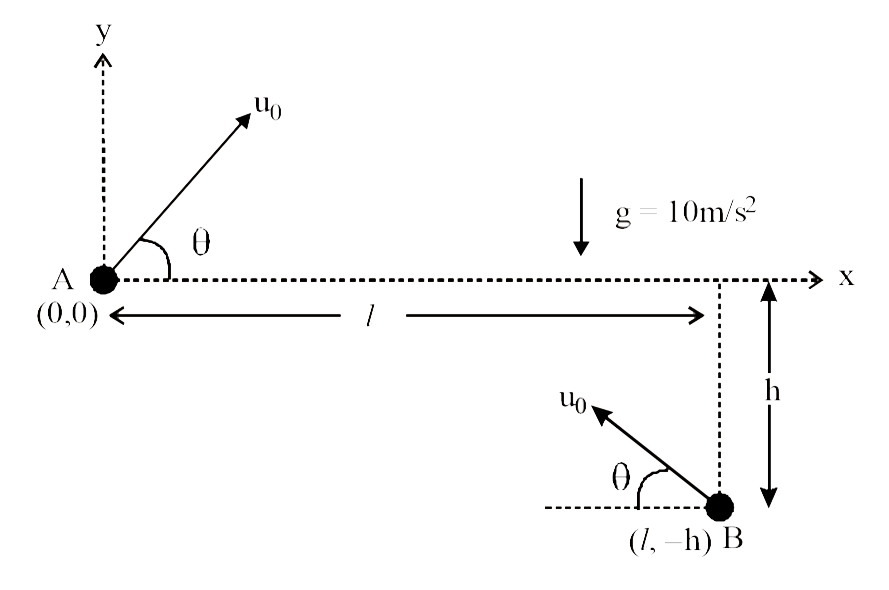
View SolutionA particle is projected from point A perpendicular to inclined plane with a velocity 50m/s as shown in the figure. Particle strikes a vertical plane perpendicularly at point B. Time taken by particle in going from point A to point B is
View SolutionTwo identical particles move towards each other with velocity 2 v and v respectively. The velocity of centre of mass is
View SolutionA particle is projected with velocity "u" in horizontal direction as shown in the figure. Find u if particle collides perpendicularly with inclined plane. h
View SolutionA particle is projected with a speed V from a point O making an angle of 30^(@) with the vertical. At the same instant, a second particle is thrown vertically upwards with a speed v from a point A. The two particle reach H, the highest point own the parabolic path of particle one simultaneously. Then ratio V/v is-
View SolutionA small particle of mass on is projected with an initial velocity v at an angle 8 with x axis in X-Y plane as shown in Figure. Find the angular momentum of the particle.
View Solutionकण का प्रारम्भिक वेग व त्वरण चित्र में दर्शाये अनुसार है। कण का त्वरण सदि । अपरिवर्तित रहता है। कण के पथ की वक्रता त्रिज्या -
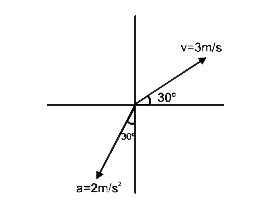
View SolutionTwo particles A and B are placed as shown in figure. The particle A, on the top of tower, is projected horizontally with a velocity u and particle B is projected along the surface towards the tower, simultaneously. If both particles meet each other, then the speed of projection of particles B is [ignore any friction]
View Solution

